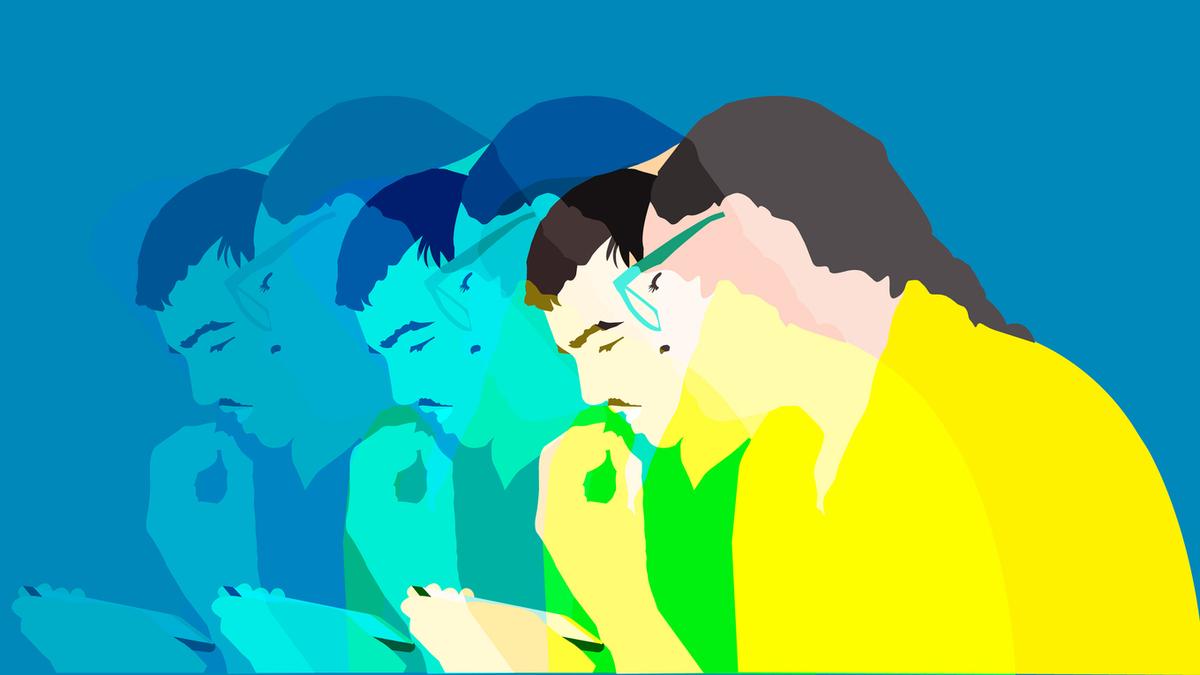The mediating role of self-compassion in the relationship between childhood trauma and the symptoms of body dysmorphic disorder – BMC Psychology

Report on Body Dysmorphic Disorder and its Correlates in the Context of Sustainable Development Goals
Introduction: A Global Mental Health Challenge
Body Dysmorphic Disorder (BDD) is a severe and debilitating mental disorder characterized by a pathological preoccupation with perceived defects in physical appearance. The rising incidence of BDD, particularly among adolescents and young women, presents a significant global public health concern, directly challenging the achievement of Sustainable Development Goal 3 (SDG 3): Good Health and Well-being. This goal explicitly calls for the promotion of mental health and well-being for all at all ages. The prevalence of BDD, with rates of symptomatology reported as high as 12.5% and body image dissatisfaction affecting up to 36.7% of youth, underscores the urgent need for targeted interventions.
Etiology and Contributing Factors
Societal Pressures and Gender Disparities
The intensification of appearance-related concerns is largely attributed to societal and mass media influences that promote idealized and often unattainable body standards. This issue has a disproportionate impact on women and girls, highlighting a critical intersection with Sustainable Development Goal 5 (SDG 5): Gender Equality. The disorder typically emerges during adolescence (ages 14-18) and research consistently indicates a higher prevalence among females, who tend to focus on concerns related to skin, stomach, weight, and breasts. Addressing the societal pressures that fuel BDD is essential for promoting gender equality and empowering women and girls.
The Critical Impact of Childhood Trauma
Etiological studies identify a profound link between adverse childhood experiences and the development of BDD symptoms. This connection brings the issue into the domain of Sustainable Development Goal 16 (SDG 16): Peace, Justice and Strong Institutions, particularly Target 16.2, which aims to end abuse, exploitation, and all forms of violence against children. Childhood maltreatment, which undermines a child’s fundamental right to safety and care, is a significant predictor of lifelong mental health outcomes.
- Traumatic experiences include physical, sexual, and emotional abuse, as well as neglect.
- Such trauma can lead to physical, cognitive, psychological, and social difficulties in adulthood.
- Abusive experiences are hypothesized to foster body dissatisfaction, intense body shame, and a distorted body image.
- The mechanisms linking trauma to BDD include altered emotional processing, cognitive biases, and stress-related biological changes.
The Mediating Role of Psychological Mechanisms
Attachment Styles and Emotional Regulation
The quality of early caregiver relationships is fundamental to developing the capacity for emotional regulation. Childhood trauma inflicted by caregivers can disrupt the formation of a secure attachment style, leading to subsequent difficulties in managing emotions. This failure to provide a secure developmental foundation is a direct barrier to achieving SDG 3 and is a consequence of failing to meet the protective aims of SDG 16.
- The attachment system is a natural facilitator of emotional regulation.
- Early trauma can lead to a distorted attachment style and impaired emotional regulation.
- Individuals with insecure attachments tend to exhibit poorer emotional regulation skills.
Self-Compassion as a Key Intervening Variable
Self-compassion—treating oneself with kindness and recognizing personal shortcomings as part of the common human experience—has emerged as a crucial mediating factor. It is an adaptive emotion-regulation strategy that is inversely related to BDD symptomatology. A lack of self-compassion is considered a core cognitive pattern in BDD and is strongly correlated with a history of childhood maltreatment.
Components of Self-Compassion:
- Self-Kindness: Replacing harsh self-judgment with a kind and understanding attitude.
- Common Humanity: Viewing personal failures and suffering as part of a shared human experience, counteracting isolation.
- Mindfulness: Maintaining a balanced awareness of negative emotions without over-identification or suppression.
Research indicates that individuals with a history of childhood abuse exhibit diminished self-compassion. This suggests that fostering self-compassion could be a powerful therapeutic strategy to mitigate the long-term psychological impact of trauma, thereby advancing the mental health targets of SDG 3.
Research Framework and Objectives
Investigating the Interplay of Factors
Given the complex relationships between early adversity, psychological traits, and mental health disorders, this research investigates the mediating role of self-compassion in the pathway from childhood trauma to BDD symptoms. Understanding these mechanisms is crucial for developing effective interventions that align with global health and justice objectives.
Primary Aims of the Study:
- To analyze the relationships among childhood trauma, self-compassion, and BDD symptoms.
- To explore the mediating role of self-compassion in the relationship between childhood trauma and BDD symptoms.
The central hypothesis posits that self-compassion mediates the relationship between childhood trauma and the manifestation of BDD symptoms. Validating this hypothesis would provide a critical evidence base for designing interventions focused on cultivating self-compassion, which could help protect vulnerable individuals and contribute to the successful realization of SDG 3, SDG 5, and SDG 16.
1. Which SDGs are addressed or connected to the issues highlighted in the article?
The article on Body Dysmorphic Disorder (BDD) addresses and connects to several Sustainable Development Goals (SDGs) by exploring the intersections of mental health, gender inequality, and childhood trauma.
-
SDG 3: Good Health and Well-being
This is the most central SDG to the article. The text is entirely focused on Body Dysmorphic Disorder (BDD), which it defines as a “severe, chronic, and debilitating mental disorder” and a “significant global public health concern.” The article discusses the disorder’s prevalence, its impact on daily functioning and quality of life, and its psychological underpinnings, all of which fall directly under the goal of ensuring healthy lives and promoting well-being for all at all ages.
-
SDG 5: Gender Equality
The article explicitly connects BDD to gender. It states that “the incidence of BDD has risen in recent years, particularly among young women,” and that research “consistently indicates a considerable prevalence of BDD among youth, particularly females.” It also highlights gender differences in the specific areas of concern, noting women tend to focus on “skin, stomach, weight, and breasts.” This demonstrates how societal pressures and health outcomes can disproportionately affect women and girls, making gender equality a relevant goal.
-
SDG 16: Peace, Justice and Strong Institutions
This SDG is relevant through its focus on ending violence against children. The article extensively links BDD to “childhood maltreatment,” which it defines as “all forms of physical, sexual, and emotional abuse, as well as physical and emotional neglect.” It identifies these traumatic experiences as “significant predictors of lifelong physical and mental health outcomes” and a potential cause for the development of BDD symptoms. This directly relates to the goal of protecting children from abuse and violence.
2. What specific targets under those SDGs can be identified based on the article’s content?
Based on the issues discussed, the following specific targets can be identified:
-
Target 3.4: Reduce premature mortality from non-communicable diseases and promote mental health and well-being
The article’s entire focus is on BDD, a mental health condition. It describes BDD as a “major public health concern” that disrupts daily functioning and is linked to a lower “overall quality of life.” By investigating the causes (childhood trauma, lack of self-compassion) and psychological mechanisms of BDD, the article contributes to the knowledge base needed for prevention and treatment, directly aligning with the promotion of mental health and well-being as stipulated in this target.
-
Target 5.2: Eliminate all forms of violence against all women and girls
While the target is broad, its relevance is established by the article’s connection between childhood abuse (a form of violence) and BDD, a condition that disproportionately affects females. The article notes that “childhood maltreatment” can lead to BDD, and since BDD is more prevalent in women, addressing the root cause of violence against children is a crucial step in mitigating its long-term, gendered consequences on mental health.
-
Target 16.2: End abuse, exploitation, trafficking and all forms of violence against and torture of children
This target is directly addressed. The article posits a strong causal link between adverse childhood experiences and BDD. It states, “etiological studies suggest that prolonged exposure to childhood trauma… [is] predicting the development of BDD symptoms.” It further discusses how “experiences of abuse or neglect” and “childhood maltreatment” are “prevalent and severe in individuals with BDD.” The research presented in the article underscores the critical importance of achieving this target to prevent long-term psychological disorders.
3. Are there any indicators mentioned or implied in the article that can be used to measure progress towards the identified targets?
The article mentions and implies several quantitative and qualitative indicators that can be used to measure progress.
-
Indicators for Target 3.4 (Promote mental health and well-being)
The article provides direct quantitative data that can serve as indicators for the prevalence of mental health challenges related to body image.
- Prevalence of Body Dysmorphic Disorder (BDD): The article cites specific figures, stating that “Reported figures for BDD range from 12.5%” and that in Iran, “at least one in three individuals reports BDD symptoms.” Tracking this prevalence rate over time would measure progress in managing this mental disorder.
- Prevalence of body image dissatisfaction: The article notes that “the rate of body image dissatisfaction climbs as high as 36.7%.” This serves as a broader indicator of mental well-being related to appearance.
-
Indicators for Target 5.2 (Eliminate violence against women and girls)
The article implies the need for gender-disaggregated data to monitor the specific vulnerabilities of women and girls.
- Prevalence of BDD, disaggregated by gender: The article repeatedly states that BDD is more common in females (“particularly among young women”). A key indicator would be the gender-specific prevalence rate of BDD to measure if interventions are successfully reducing this gender health gap.
-
Indicators for Target 16.2 (End abuse and violence against children)
While no specific statistic is given for the general population, the article’s core hypothesis implies that the rate of childhood trauma is a critical indicator.
- Prevalence of childhood maltreatment: The article establishes that “childhood maltreatment and other traumatic experiences are prevalent and severe in individuals with BDD.” Therefore, the rate of “physical, sexual, and emotional abuse, as well as physical and emotional neglect” in the general population is an implied upstream indicator. A reduction in these rates would be expected to lead to a reduction in BDD and other related mental health disorders.
4. Table of SDGs, Targets, and Indicators
| SDGs | Targets | Indicators |
|---|---|---|
| SDG 3: Good Health and Well-being | Target 3.4: By 2030, reduce by one third premature mortality from non-communicable diseases through prevention and treatment and promote mental health and well-being. |
|
| SDG 5: Gender Equality | Target 5.2: Eliminate all forms of violence against all women and girls in the public and private spheres. |
|
| SDG 16: Peace, Justice and Strong Institutions | Target 16.2: End abuse, exploitation, trafficking and all forms of violence against and torture of children. |
|
Source: bmcpsychology.biomedcentral.com

What is Your Reaction?
 Like
0
Like
0
 Dislike
0
Dislike
0
 Love
0
Love
0
 Funny
0
Funny
0
 Angry
0
Angry
0
 Sad
0
Sad
0
 Wow
0
Wow
0











































































